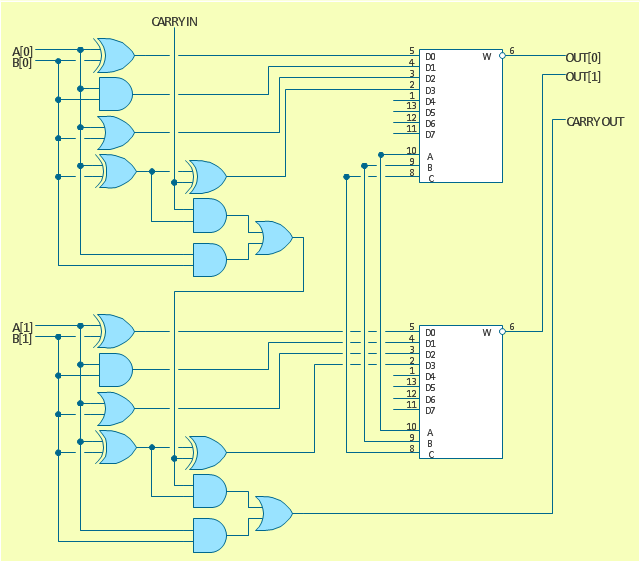


Topics include how devices such as iPods and iPhones generate, transmit, receive, and process information (music, images, video, etc.), the relationship between technology and issues such as privacy and “net neutrality,” and current topics related to information technology. iTunes 101: A Survey of Information Technology (4) (Program or materials fees may apply.) Prerequisites: ECE 35.ĮCE 85. Topics will include two terminal devices, bipolar and field-effect transistors, and large and small signal analysis of diode and transistor circuits. Introduction to linear and nonlinear components and circuits.
#Electrical circuit design software with boolean operators series#
Steady-state circuit analysis, first and second order systems, Fourier Series and Transforms, time domain analysis, convolution, transient response, Laplace Transform, and filter design. Prerequisites:MATH 18, 20A–B, and PHYS 2A. It is highly recommended taking MATH 20C and PHYS 2B prior or during the same quarter. Introduction to Analog Design (4)įundamental circuit theory concepts, Kirchhoff’s voltage and current laws, Thevenin’s and Norton’s theorems, loop and node analysis, time-varying signals, transient first order circuits, steady-state sinusoidal response. Prerequisites: ECE 15 and 25 with grades of C– or better.ĮCE 35. Topics include representation of information, computer organization and design, assembly and microprogramming, current technology in logic design. The fundamentals of both the hardware and software in a computer system. (Course materials and/or program fees may apply.) Prerequisites: none.ĮCE 30. Topics include Boolean algebra, combination and sequential logic, gates and their implementation in digital circuits. Principles introduced in lectures are used in laboratory assignments, which also serve to introduce experimental and design methods. This course emphasizes digital electronics. Prerequisites: CSE 8B or CSE 11 or ECE 15.ĮCE 25. Emphasizes the use of object-oriented techniques to model and reason about system design, and using modern C++ idioms, design patterns, and the Standard Template Library (STL) to develop solutions to systems engineering challenges that are more reliable, robust, scalable, and secure. This course combines the fundamentals of object-oriented design in C++, with the programming, debugging, and testing practices used by modern software developers. Object-Oriented Programming: Design and Development with C++ (4) Prerequisites: MAE 8 or CSE 8B or CSE 11 or ECE 15.ĮCE 17.

Students will apply their prior knowledge in C (from ECE15) to program microcontrollers and will engage in data analysis using the Python programming language. Key concepts include sampling, signal processing, communication, and real-time control. Students are introduced to embedded systems concepts with structured development of a computer controller based on electromyogram (EMG) signals through four lab assignments through the quarter. Rapid Hardware and Software Design for Interfacing with the World (4) Prerequisites: a familiarity with basic mathematics such as trigonometry functions and graphing is expected but this course assumes no prior programming knowledge.ĮCE 16. Techniques for using MATLAB to graph the results of C computations are developed. The commonality across programming languages of control structures, data structures, and I/O is also covered. Students learn the C programming language with an emphasis on high-performance numerical computation. Prerequisites:priority enrollment given to engineering majors EC04, EC26, EC27, EC28, and EC37. Topics include circuit theory, assembly, and testing, embedded systems programming and debugging, transducer mechanisms and interfacing transducers, signals and systems theory, digital signal processing, and modular design techniques. Introduction to Electrical and Computer Engineering (4)Īn introduction to electrical and computer engineering. The departmental website includes the present best estimate of the schedule of classes for the entire academic year. For the names of the instructors who will teach the course, please refer to the quarterly Schedule of Classes. Students are strongly advised to check the Schedule of Classes or the department before relying on the schedule below. The department will endeavor to offer the courses as outlined below however, unforeseen circumstances sometimes require a change of scheduled offerings. Coursesįor course descriptions not found in the UC San Diego General Catalog 2021–22, please contact the department for more information. Electrical and Computer Engineering (ECE)Īll courses, faculty listings, and curricular and degree requirements described herein are subject to change or deletion without notice.


 0 kommentar(er)
0 kommentar(er)
